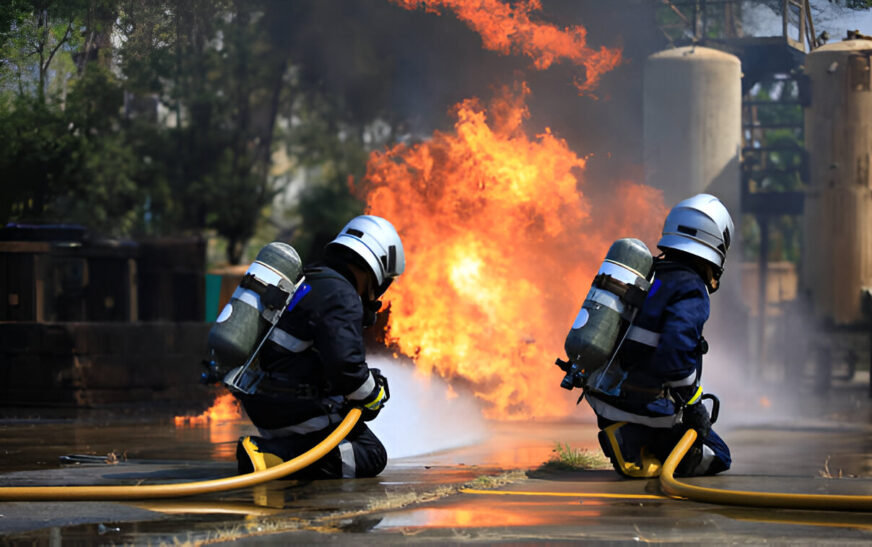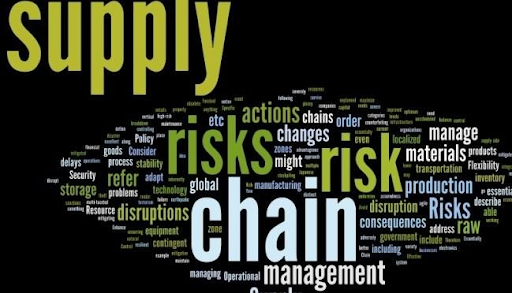Fire suppression systems are vital components in modern buildings, helping protect not only the property but also the safety of first responders, particularly firefighters. When fires break out, firefighters risk their lives to save others and prevent further damage. The effectiveness of fire suppression systems can significantly influence their safety by controlling fires quickly, limiting smoke and toxic fumes, and preventing the spread of fire. This article explores how fire suppression systems enhance firefighter safety during emergencies, focusing on their key benefits and applications.
Role of Fire Suppression Systems in Reducing Fire Intensity
One of the primary benefits of fire suppression systems is their ability to reduce the intensity of fires before firefighters arrive on the scene. These systems are designed to activate automatically when a fire is detected, which can significantly slow the fire’s spread, allowing firefighters more time to assess and control the situation. In high-risk environments, such as warehouses or commercial kitchens, fire suppression systems provide an essential first line of defense.
These systems work by releasing water, foam, or specialized chemicals, which suppress the fire’s ability to grow by cooling the flames or depriving them of oxygen. The quicker the fire is controlled, the safer it becomes for firefighters and building occupants. Without such systems, firefighters would face greater risks in the early stages of an emergency response.
Enhancing Visibility and Air Quality
In emergency fire situations, the thick smoke and toxic fumes can make it difficult for firefighters to see and breathe. Fire suppression systems, particularly those that incorporate ventilation or water-based suppression, can mitigate these hazards by reducing smoke and improving visibility. Sprinkler systems and mist-based suppression methods release fine water droplets that can capture smoke particles and clear the air, enabling firefighters to work more effectively in hazardous conditions.
With better air quality and visibility, firefighters can locate victims, assess the situation, and perform their duties more efficiently and safely. This not only improves the speed of response but also reduces the likelihood of disorientation, injury, or even fatality due to smoke inhalation or poor visibility.
Fire Suppression Systems and Structural Protection
Another way fire suppression systems contribute to firefighter safety is by protecting the structural integrity of buildings. Many modern suppression systems are designed to protect not just the occupants but also the framework of a building. As fire suppression systems activate, they can limit the damage caused to essential structural elements, such as beams, support walls, and roofs.
By minimizing structural damage, firefighters are less likely to encounter dangerous conditions, such as collapsing walls or ceilings, while conducting their rescue operations. This is particularly important in high-rise buildings or industrial settings, where the fire may spread quickly, and structural failure poses an increased risk to responders.
Faster Response Times with Advanced Technology
Technological advancements have allowed fire suppression systems in Corona to become more responsive and precise. Systems like pre-action sprinklers or water mist suppression utilize sensors that detect the presence of fire or heat, allowing the suppression system to activate in a fraction of a second. This quick response is crucial in preventing fires from growing uncontrollably, ensuring that firefighters can arrive at the scene without facing an overwhelming blaze.
In cities like Corona, fire suppression systems are often a critical part of urban safety plans. For instance, local fire codes may require these systems in certain types of buildings, ensuring that fire hazards are minimized and that firefighter safety is prioritized during emergencies. The presence of fire suppression systems in commercial and residential buildings in Corona can significantly enhance the effectiveness and safety of firefighting efforts in the area.
Fire Suppression Systems Reduce Firefighting Costs and Risks
By controlling a fire early on, fire suppression systems not only enhance safety but also reduce the overall costs associated with firefighting. The faster the fire is suppressed, the less extensive the damage is to property, which in turn decreases the resources needed for firefighting. For firefighters, this means reduced exposure to life-threatening situations such as flashover, collapsing structures, and toxic smoke inhalation.
The economic impact of fire suppression systems is also significant for fire departments, as fewer resources are required to handle large-scale fires. This allows them to allocate resources to more critical situations, further improving the overall safety of both the public and firefighters.
Supporting the Mental and Emotional Well-being of Firefighters
While the physical risks associated with firefighting are well-known, the mental and emotional toll can also be significant. Repeated exposure to high-stress situations, including fires, accidents, and trauma, can lead to burnout and psychological distress. Fire suppression systems can indirectly support the mental well-being of firefighters by providing a safer working environment, thus reducing the constant pressure of responding to life-threatening situations.
When a fire is suppressed quickly, it lowers the risk of catastrophic outcomes, such as fatalities or extensive damage. This risk reduction can have a calming effect on firefighters, knowing that their chances of encountering extreme danger are minimized. Furthermore, after the fire is under control, firefighters can focus on performing their duties more effectively, without the added burden of fearing the uncontrollable spread of the fire.
The importance of mental clarity in high-pressure situations cannot be overstated. This is where practices like Reiki Healing Online can play a valuable role. Reiki energy healing, known for promoting emotional balance and stress reduction, can provide firefighters with additional tools for managing anxiety and tension. Incorporating relaxation techniques like Reiki into their routines could help improve their focus and reduce the psychological strain often associated with their profession.
How Fire Suppression Systems Support Rescue Operations
In addition to controlling fire and smoke, suppression systems can be designed to assist with emergency rescues. Some systems incorporate features like emergency lighting or audio alarms, which guide firefighters and building occupants to safe exit routes. These systems can also reduce the need for firefighters to carry heavy firefighting equipment into hazardous areas, allowing them to move quickly and efficiently during a rescue operation.
The presence of fire suppression systems makes the entire rescue process safer by reducing the amount of time spent in high-risk zones. This not only saves lives but also ensures that firefighters can evacuate those in danger without compromising their safety.
Conclusion
Fire suppression systems are not only essential for protecting lives and property but are also instrumental in enhancing firefighter safety during emergencies. By controlling the fire early, reducing smoke and heat, and protecting building structures, these systems provide first responders with a safer environment to perform their life-saving work. Advanced technology continues to make these systems more effective, offering firefighters the protection they need to respond to fires with confidence.
In regions like Corona, where fire safety is a top priority, having reliable fire suppression systems in place ensures both public and firefighter safety. As technology advances and more resources become available, fire suppression systems will only continue to evolve, further improving the safety of firefighters and the communities they protect.









